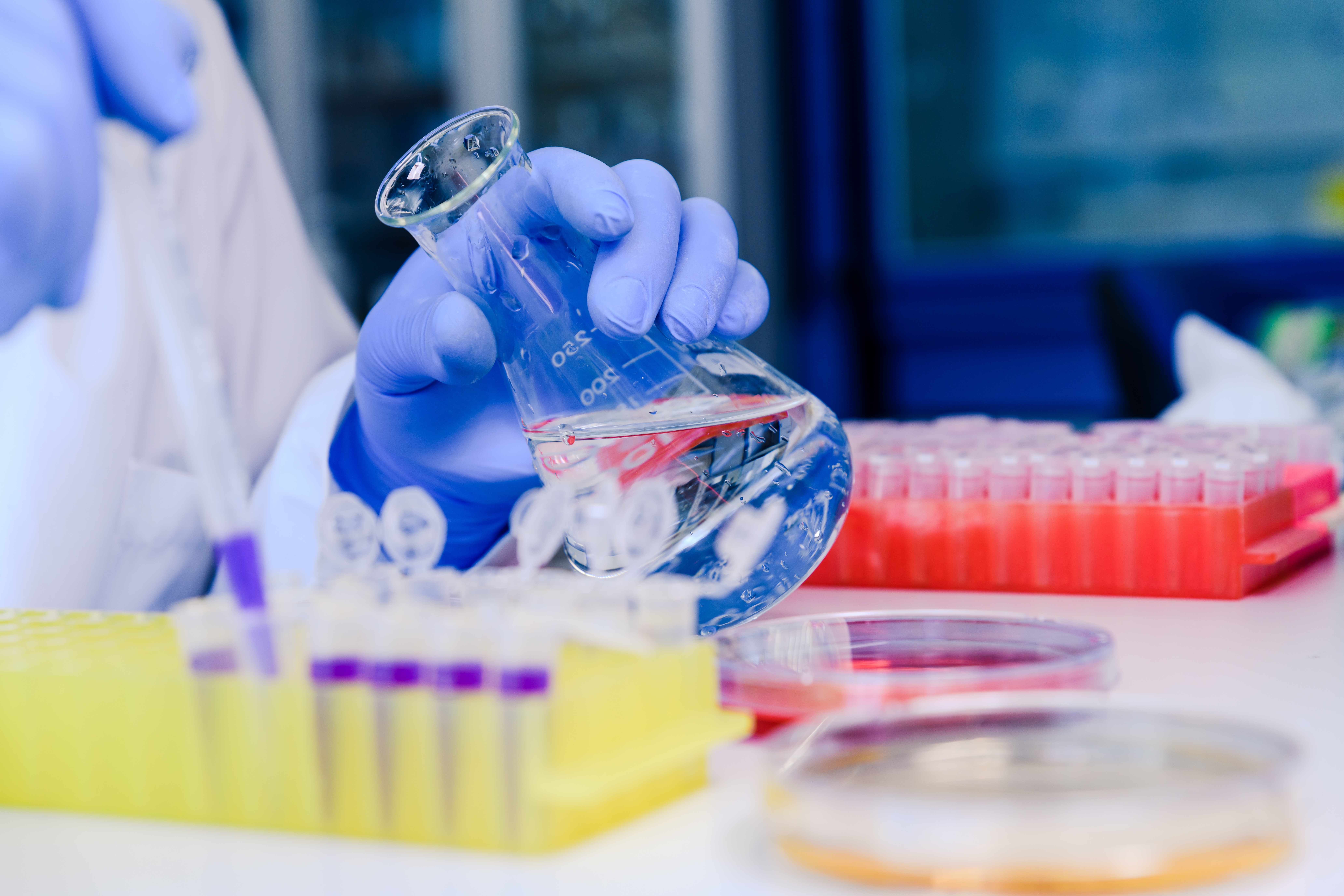Overview
What is directed evolution?
Directed evolution is a method of protein engineering that simulates natural selection in the lab. The process starts with a gene coding for a “wild-type”, or unmodified, enzyme of interest. Random variation is introduced into the gene through a process of mutagenesis, generating a library of millions of genes each coding for a unique enzyme variant. A functional selection pressure is then applied to the library, and only the genes that coded for the highest performing enzymes “survive”. This process of random mutation and selection is repeated until the desired enzyme function evolves.
How is our directed evolution technology different?
Since introducing random mutation into a gene is mostly harmful to the function of the encoded enzyme, unlocking the power of directed evolution requires the ability to screen very large numbers of enzyme variants. Our core technology combines a high-throughput emulsion format–aqueous droplets suspended in oil that serve as microreactors–with high-throughput selection assays to enable the functional screening of hundreds of millions of enzyme variants in parallel.
What are the benefits of evolved enzymes versus wild-type enzymes?

The majority of DNA and RNA modifying enzymes are “wild-type”, isolated from nature without modification, and were never intended as tools for molecular biology. Directed evolution enables us to engineer improvements to enzyme function such as thermostability, specific activity, processivity, or resistance to inhibitors, that require global changes to protein structure. These functions are not amenable to rational design, a method of protein engineering that requires detailed information about enzyme structure and function. These evolved enzymes are different from other “engineered” enzymes because they are optimized for functions that cannot be addressed using rational design.
How are the enzymes used today?
Solix Biosystems has developed a suite of high-performance enzymes for PCR, qPCR and next-generation sequencing applications.
